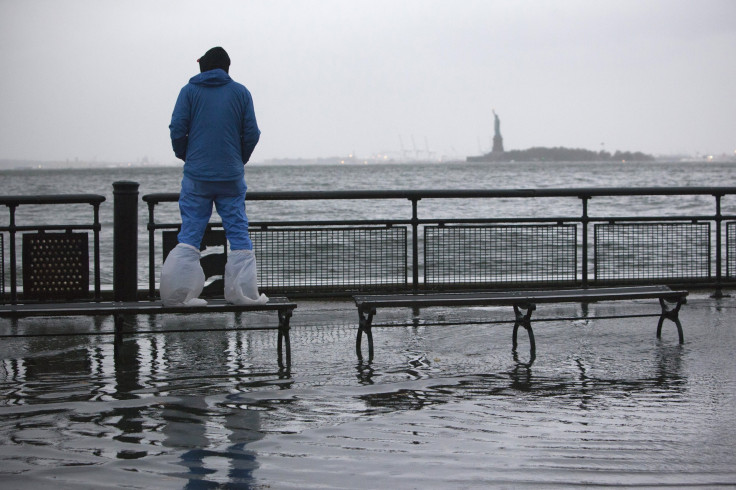Climate Change And New York City: More Heat, Rain And Flooding On The Horizon For Big Apple [REPORT]

Increased coastal flooding, more intense heat waves and lots of rain are on the horizon for New Yorkers as global greenhouse gases drive manmade climate change and alter weather patterns, a report from the New York City Panel on Climate Change predicts. The report looked at the effects of global warming on the most populated U.S. city, and its results were anything but promising.
Among its most startling claims was that by 2050, sea levels around Manhattan could rise 11-21 inches. By the end of the century, that figure jumps to an extraordinary 6 feet, enough to put about 7 percent of the city permanently underwater, according to the worst-case scenario.
Ever since the Industrial Revolution of the 18th and 19th centuries ushered in an era of major global development, the burning of fossil fuels has released vast quantities of greenhouse gases into Earth’s atmosphere. The buildup of things like carbon dioxide and methane has disrupted climate systems by trapping more heat near Earth’s surface than would have occurred naturally. Rising global temperatures have been linked to shrinking polar ice caps, greater and more intense periods of drought, and more extreme storms in some parts of the world, among other things.
Since 1900, New York City has seen an increase in the frequency and intensity of storm surges, the likes of which were witnessed in 2012 when Hurricane Sandy inundated the city’s streets, subways and tunnels with water, causing a record $65 billion in damages. Temperatures in Central Park have increased at a rate of 0.3 degrees Fahrenheit per decade between 1900 and 2013. The city has seen more summer days top the heat charts in recent years than ever, with nighttime temperatures warming faster than daytime ones, a tell-tale sign of the role of greenhouse gas emissions play in altering climates, according to the state’s Department of Environmental Conservation. Rising temperatures have meant the arrival of diseases like dengue fever and West Nile virus that are typical of warmer climates.
At the same time, annual precipitation has increased about 8 inches in Central Park in the past 115 years at a rate of about 0.8 inch per decade. “The science is clear -- our actions since the Industrial Revolution have changed our climate and changed our planet,” Nilda Mesa, director of the Mayor’s Office of Sustainability, said in an emailed statement. “The challenge ahead may be daunting, but we know there’s no choice but to take bold action to reduce our contributions to climate change, as well as to protect our city from what lies ahead that we cannot prevent.”
© Copyright IBTimes 2025. All rights reserved.






















